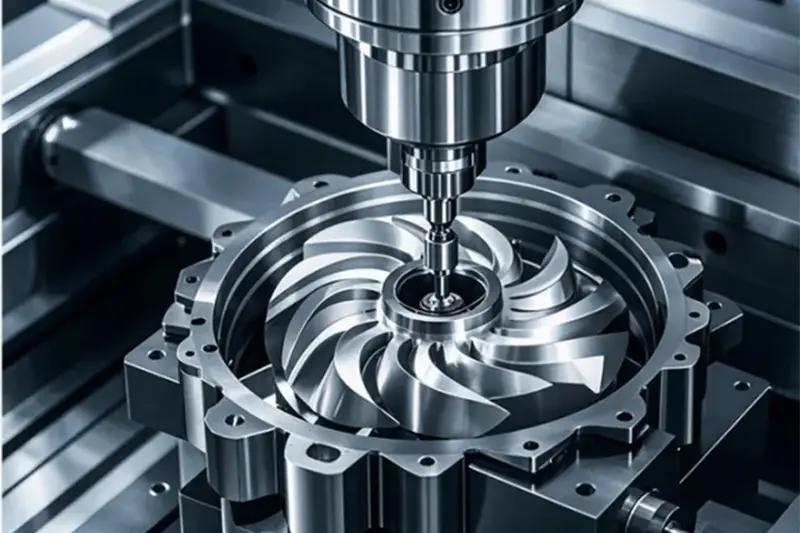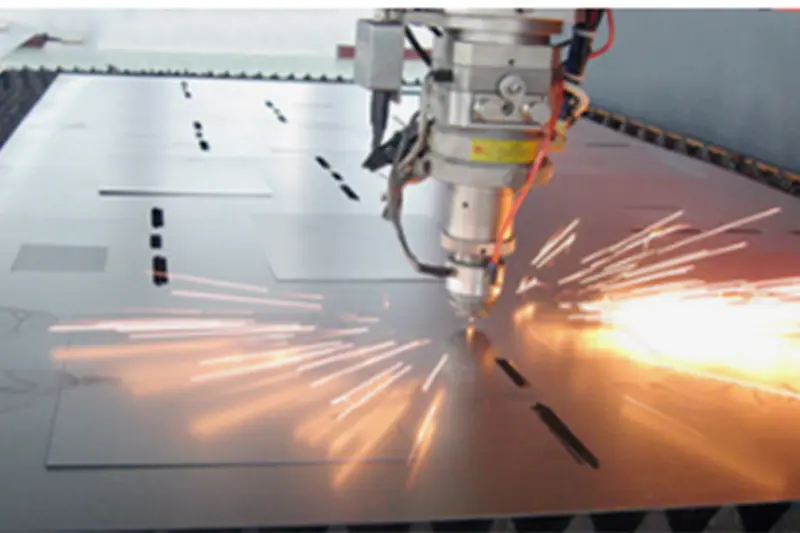OEM Services
- Home
- »
- OEM Services
- »
- 3d-printing-product
HRS 3D Printing Processing Services: Pioneering the Future of Manufacturing
In the ever-evolving landscape of manufacturing technology, 3D printing stands out as a revolutionary force reshaping industries across the globe. At HRS, we are at the forefront of this technological revolution, offering state-of-the-art 3D printing processing services that cater to a diverse range of industries.
3D Printing Design Guidelines (Key Features Of 3D Printing)
☑ The fabrication of 3D printed products is based on the design files. There are some details and features that always need to be taken into account when designing a 3D printing part, but the best result varies depending on the different 3D printing services.

| Supported Walls | Unsupported Walls | Support & Overhangs | Embossed & engraved details | Horizontal bridges | Holes | Connecting or moving parts | Escape holes | Min. feature size | Min. pin diameter | Max. tolerance | |
| FDM | 0.8mm | 0.8mm | 45° | 0.6mm wide & 2mm high | 10mm | ⌀2mm | 0.5mm | – | 2mm | 3mm | ±0.5% (lower limit ±0.5mm) |
| SLA | 0.5mm | 1mm | Support always required | 0.4mm wide & high | – | ⌀0.5mm | 0.5mm | 4mm | 0.2mm | 0.5mm | ±0.5%(lower limit ±0.5mm) |
| SLS | 0.7mm | – | – | 1mm wide & high | – | ⌀1.5mm | moving parts: 0.3mm Connections: 0.1mm | 5mm | 0.8mm | 0.8mm | ±0.3% (lower limit ±0.3mm) |
| MJ | 1mm | 1mm | Support always required | 0.5mm wide & high | – | ⌀0.5mm | 0.2mm | – | 0.5mm | 0.5mm | ±0.1mm |
| BJ | 2mm | 3mm | – | 0.5mm wide & high | – | ⌀1.5mm | – | 5mm | 2mm | 2mm | Metal:±0.2 Sand:±0.3mm |
| DMLS | 0.4mm | 0.5mm | Support always required | 0.1mm wide & high | 2mm | ⌀1.5mm | – | 5mm | 0.6mm | 1mm | ±0.1mm |
Design Guidelines For All 3D Printing Techniques
☑ The 3D printing design is important as it influences the difficulty, cycle time, and cost of follow-up manufacturing. When it comes to design tips, some rules are applicable to all 3D printing processes, and some will be limited to a specific technology.

FDM | 200 x 200 x 200 mm for desktop printers, up to 900 x 600 x 900 mm for industrial printers |
SLA | 145 x 145 x 175 mm for desktop printers, up to 1500 x 750 x 500 mm for industrial printers |
SLS | 300 x 300 x 300 mm, up to 750 x 550 x 550 mm |
DMLS/SLM | 250 x 150 x 150 mm, up to 500 x 280 x 360 mm |
MJF | 380 x 285 x 380 mm |
Supports in 3D printing
Part orientation in 3D printing
☑ Find the face that can provide the best adhesion to the build plate and the highest stability.
☑ If the product needs to be subject to stress, then it should be oriented to ensure the direction of the minimum applied stress is parallel to the build direction, which is usually the vertical direction.
☑ Be clear about the build volume of the 3D printer.
☑ FDM prints are easier to delaminate and fracture in the Z direction than in the XY direction when subjected to tension.
☑ Orient the part to make overhangs of less than 45° are minimized.
☑ In the vertical direction, cylindrical features print more precisely than in the horizontal.
Dimensional accuracy in 3D printing
The dimensional accuracy refers to how accurate the size and form of the printed part are compared to that in the CAD design. Factors that affect dimensional accuracy include material quality, equipment, post-processing, and more. Dimensional tolerance, shrinkage, and support requirements are three key elements to measuring dimensional accuracy. Below are the dimensional tolerance of different 3D processes.
FDM dimensional tolerance | prototyping (desktop):±0.5% (lower limit:±0.5 mm), industrial:±0.15% (lower limit:±0.2 mm) |
SLA dimensional tolerance | prototyping (desktop):±0.5% (lower limit:±0.10 mm) industrial:±0.15% (lower limit:±0.01 mm) |
SLS/MJF dimensional tolerance | ±0.3% (lower limit:±0.3 mm) |
Layer height in 3D printing
Layer height is a measurement of the amount of material extruded by the printer’s nozzle for each layer of your part. It is measured in microns or millimeters. The selection of layer height is important for some 3D printing technologies, such as SLA and FDM. Below are the typically applied layer height for different processes.
– FDM: 50 – 400 μm
– SLA: 25 – 100 μm
– SLS: 80 – 120 μm
– MJF: 80 μm
– DMLS/SLM: 30 – 50 μm
hrs
3D Printing Metal Materials Guide
3D printing and prototyping have advanced development in recent years. With these improvements, metal 3D printing has become a possibility. Metal 3D printing is used in a variety of sectors. Companies that use metal 3D printing are discovering that 3D printing complicated metal parts in low quantities is considerably more cost-effective than traditional methods of production. Metal 3D printed items are cheaper and have a wider range of material alternatives. Aluminum is a popular metal for 3D printing since it is both sturdy and lightweight. Steel is another extensively used material that is perfect for industrial applications due to its strength, good polish, and temperature tolerance. Metal 3D printing is utilized in a wide range of sectors for a variety of purposes. Functional prototypes, end-use parts, Jigs, tooling, and fixtures are some of the applications.
| Metals | Applications |
| Stainless steel | Utensils, cookware, and other items that could ultimately come into contact with water |
| Bronze | Vases and other fixtures |
| Gold | Rings, earrings, bracelets, and necklaces |
| Nickel | Coins |
| Aluminum | Thin metal products |
| Titanium | Strong, solid fixtures |
hrs
3D Printing Plastic Materials Guide
| Plastics | Features | Applications |
| ABS | Tough, strong, durable, heat-resistant, cost-effective, flexible, reusable, not biodegradable | Car bodies, appliances, and mobile phone cases |
| PLA | Easy to work with, environmentally friendly, biodegradable, available in resin and filament with a variety of colors | Food packaging, biodegradable medical devices and implants |
| PVA | Water-soluble | Often use to create a support structure for portions of a product that may warp or collapse |
| PP | Affordable, chemical resistant, flammable, and degrades with UV light | Household containers, lab equipment, and textiles |
| Nylon/PA | Strong, lightweight, durable, heat and impact-resistant, but not resistant to strong acids and bases | Applications that require high mechanical properties and functional prototypes |
| PEI | Can withstand high heat | Injection mold tools and heat-resistant components |
| PC | Heat resistant up to 135 °C, durable, impact and shatter resistant, moderately flexible, transparent, electrically non-conductive | Prototype windows and other clear products |
| PMMA/Acrylic | Good impact strength, comparable clarity, and UV absorption properties | Automobile headlights, commercial aquariums and other alternatives to glass |
| CPVC | High heat distortion temperature, chemical inertness, dielectric, and flame and smoke properties | Chemical processing, power generation, semiconductor, wastewater treatment |
| PEEK | Wear-resistant, good weight-to-strength ratio, high thermomechanical properties | Medical custom-made implants, devices, aerospace and automotive parts |
| PETG | High impact resistance, excellent chemical and moisture resistance | Compliant mechanisms, water bottles, electronic enclosures |
| TPU | Flexible, abrasion-resistant, resistant to impacts and many chemicals | Sporting goods, aerospace and automotive |
| PETP/Ertalyte | High dimensional stability, mechanical strength, low moisture absorption, physiologically inert | Thin films, containers for liquid drinks |
SLS (Selective Laser Sintering)
the materials used are nylon, metal powder, PS powder, and resin sand. The powder is turned into a tightly integrated whole by sintering, rather than melting it into a liquid state. Under laser scanning, the parts are covered layer by layer, and finally, the parts are submerged in a pile of powder. After cooling for 12-14 hours, the remaining powder can be recycled.
SLA (Stereolithography)
SLA 3D printers utilize an excess of liquid plastic that eventually solidifies into a solid product. Typically, the surfaces of parts produced by stereolithography 3D printers are smooth. the material used is photosensitive resin. The laser with a specific wavelength and intensity is focused on the surface of the photocurable material to solidify it from point to line and from line to surface in order to complete the drawing of one layer. Then the lifting table moves one layer in the vertical direction and solidifies another layer. In this way, the layers are stacked to form a three-dimensional entity.
FDM (Fused Deposition Modeling)
Thermoplastic filament is heated and extruded by FDM 3D printers to manufacture items layer by layer, from the bottom up, using a bottom-up construction method. the printing materials used are polylactic acid and ABS plastic. This technology extrudes filamentous materials, such as thermal plastics, wax, or metal, from heated nozzles, and deposits the melt at a fixed rate according to a predetermined trajectory of each layer of the part.
DLP (Digital Light Processing)
photosensitive resin is used. DLP laser forming technology is similar to SLA technology, but it uses a high-resolution digital optical processor projector to cure liquid photopolymer and photocured layer by layer.
SLM (Selective Laser Melting)
SLM accounts for the main part of metal 3D printers, the materials used are titanium alloy, cobalt chromium alloy, stainless steel, and aluminum alloy. The metal powder is melted by a high-energy ytterbium fiber laser to form multi-purpose three-dimensional parts.
Applications And Uses Of 3D Printing
3D printing parts and products can be found in a wide range of industries, and the use of 3D printing services also promotes the innovation and progress of many sectors.






Case Studies: Success in Action
We offer 3D printing capabilities for plastics including but not limited to PLA, ABS, Nylon, PETG, TPU, PEI, PP, PC, PMMA, PVA, etc.
Many factors affect the cost of 3D printing. First of all, without a 3D model, it is impossible to evaluate the price. Even experienced engineers can not quote accurate prices without a 3D design. The total volume of the part can be calculated based on the design, including the supports. Then the required materials are calculated. The more materials are used, the higher the cost. The prices of different materials are also very different. The major categories, there are mainly plastics, metals, ceramics, biological cells, etc. There are many kinds under each major category, and the price of metal is much higher than that of plastic. Now plastic is the most widely used material in 3D printing. In addition, the printed parts need to be cured, cleaned, polished, colored, and other surface treatments before they can be considered for use. The use of post-processing will also generate corresponding costs.
3D printed plastic is strong, particularly when specific filaments like PEEK or PC are employed. These materials are also utilized in the production of bullet-proof glass and riot shields. It is possible to increase the strength of the print by adjusting the infill density, wall thickness, and print orientation.
HRS
3D Printing Resources and FAQs

Difference Between Metal And Plastic 3D Printing


| Materials | the most obvious difference between plastic and metal 3d printing, plastic is a more popular option. Because of this, it is more accessible than metal. Plastic is also considerably less expensive than metal. Because of this, it is common knowledge that beginners typically go for plastic. In addition, there is a large selection of plastics available for use in 3D printing. However, only aluminum, stainless steel, titanium, and cobalt are now available as metals. |
| Design | 3D printing in plastic often takes less time to complete than 3D printing in metal. Plastic 3D printers are more energy efficient and allow for greater layer thickness while creating parts. However, 3D printing using metal materials can be time-consuming due to the complexity of the printers themselves. Complexity is required while working with plastic to create the required 3D item. In contrast to metal, however, it does not undergo the same rigorous testing. |
| Cost | Most plastic 3D printers are cheaper, aside from that, most of these 3D printers are rather simple to operate. ABS and other plastic filaments are inexpensive as well. Metals have a higher cost per build hour and a higher equipment investment requirement compared to plastics. Metal 3D printers and supplies are also quite pricey. |
| Difficulty | Plastic is the 3D printing material of choice for beginners. Materials made of plastic are also accessible in small amounts. The process of 3D printing with metals is complicated and not recommended for beginners. When 3D printing with metal, unlike with plastic, the material must be fed, melted, and hardened without losing its qualities. |
| Technology | The technology behind 3D printing plastic includes FDM, SLA, and SLS. Plastics of many types are used in these technologies. Powder-bed systems, including SLM and DMLS, are used for metal 3D printing. |
| Finishing | the post-processing of 3D-printed plastic objects is easy. The designer has several options for creating the intended appearance and feel of the thing, including using tools or doing the work by hand. Objects made using metal 3D printing typically require some sort of post-processing in order to enhance their mechanical qualities and aesthetic appeal. However, metals require more time and money to process after production. |
hrs
What Is 3D Printing?
How Does 3D Printing Work?
3D printing is a type of additive manufacturing process in which a 3D solid object created based on a computer-aided design through a layering method.
– First of all, a three-dimensional digital file of the object you want to print is needed. There are three different ways to get a 3D digital model: design, scan, and download. CAD is a common software to design a 3D model, popular CAD software includes AutoCad, SolidWorks, Tinkercad, and more. 3D scanning is a technology to analyze a real-world object and create a digital replica. You can also download one from a 3D library.
– Once you get a 3D model, you need to convert it into a proper file format. The most common 3D printing file format is STL, which is a usable file extension. Alternatives to STL are .OBJ and .3MF, these formats do not contain color information, if you need colored 3D printing objects, .X3D, .WRL, .DAE, and .PLY can be used. Ensure the file is printable.

– Slicing is the process of dividing the three-dimensional model into hundreds or thousands of layers, then generating the G-code to tell the machine how to execute the operation step by step. G-code is the most widely used CNC programming language applicable for CNC machines and 3D printers.
– Use 3D printers to complete the printing process according to automated G-code instructions.
– Remove the finished 3D printed parts from the printer. For some machines, it is easy, while the removal of 3D prints for some industrial 3D printers requires professional skills and specialized equipment.
– In some cases, additional steps or post-processing are needed to finish the production. For example, various surface finishing methods are used to improve the aesthetics and mechanical properties of 3D printed components.
Advantages Of 3D Printing
Part orientation in 3D printing
☑ Allows the design and creation of more complex geometries.
☑ Fewer machines and operators are needed to manufacture.
☑ High flexibility and versatility allows almost everything to be created.
☑ Allows the inclusion of multiple materials into a single object.
☑ Layer-by-layer assembly enhances the design and ensures better quality.
☑ Each successive individual part can be monitored to reduce failure and errors.
☑ Does not need lots of space for inventory, print on demand based on the design.
☑ Plastic 3D printed parts offer advantages in applications where lightweight is important.
☑ Minimize the used materials, with little or no waste compared to cutting from large chunks.
☑ 3D printing systems are much more accessible and require no additional person to run.
☑ The technology is environmentally-friendly and sustainable.
Difference Between Metal And Plastic 3D Printing

☑ Metal or plastic 3D printed prototype and production parts in 7-10 days.
☑ Precision custom 3D printing parts at affordable prices.
☑ Online free quote in the shortest time.
☑ Single prototypes or complex shapes are both allowed.
☑ A wide selection of metal or plastic materials.

☑ Metal or plastic 3D printed prototype and production parts in 7-10 days.
☑ Precision custom 3D printing parts at affordable prices.
☑ Online free quote in the shortest time.
☑ Single prototypes or complex shapes are both allowed.
☑ A wide selection of metal or plastic materials.




